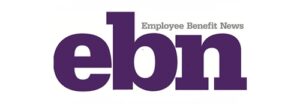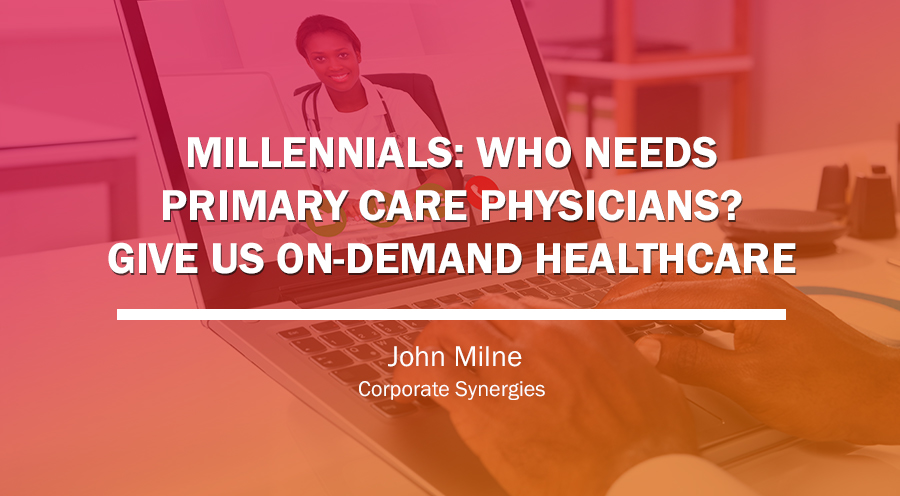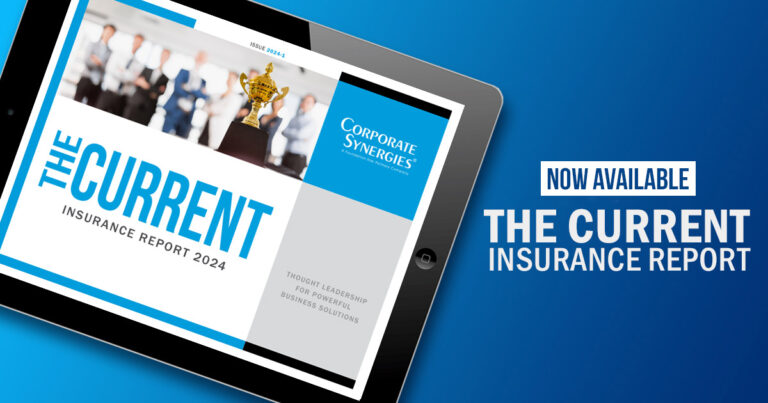
Millennials, and Generation Z behind them, are changing the way they access healthcare. In fact, 45% of 18- to 29-year-olds say they don’t have a primary care physician.1 Instead, they’re opting for on-demand healthcare.
Traditionally, individuals and families see primary care physicians several times a year and build relationships with their doctors over time. Visiting the same primary care physician when an illness strikes, or for an annual health & wellness checkup, can help the doctor notice changes in a patient’s health and catch issues before they become more serious (and costly).
But for Millennials, having a primary care physician isn’t necessarily a priority.
These options are easily accessible and typically include shorter wait times. The number of urgent care centers reflects the trend—they were projected to grow 5.8% in 2018.2
Then there is employers’ shift away from health maintenance organizations (HMOs), which often required that each employee choose a primary care doctor at the start of the plan. HMOs also require a referral from the primary care physician to see specialists. Recent research shows that most often, employers offer preferred provider organizations (PPOs) (84%), while 40% offer consumer-directed health plans (CDHPs) and 35% offer HMOs.3
Finally, physician shortages are leading to longer wait times for appointments. The U.S. population continues to grow and age, which may lead to a shortage of 120,000 primary and specialty doctors by 2030.4
Millennials seem to prefer on-demand healthcare, like urgent care, drug store clinics and telemedicine services.
For employers, it’s important to understand the reasons behind the shift to on-demand healthcare and educate employees to ensure they can get appropriate medical attention when they need it.
One crucial part of this education is helping employees understand when they should visit urgent care versus the emergency room, and reminding them that telemedicine is available. Over 95% of large employers and just over one-third of small- and mid-size employers offer telemedicine benefits. But adoption rates among employees remain low—only 20% of large employers report utilization rates above 8%.5
Ensure your employees know that the service is available throughout the year and help them understand the cost if any is associated with the service. You may consider offering $0 copays for telemedicine visits to encourage employee use.
Also encourage employees to get a health & wellness visit each year to uncover medical issues and take steps to prevent others. One way to do this without forcing employees to wait for an appointment (or commit to a doctor) is to bring the service in-house. Increasingly, large employers are adding this service to help employees stay healthy. In fact, one-third of employers with more than 5,000 employees and 16% of employers with 500-4,999 employees now have onsite clinics. Another 8% of midsize employers plan to add clinics in 2019.6
Providing health assessments as part of a health and wellness program is another way to get employees, especially money-conscious Millennials, in front of a doctor. Younger workers are likely to embrace incentives or premium discounts that are tied to a physician visit.
Direct primary care is yet another employer option to provide easy-to-access primary care. With direct primary care, employers partner with primary care physicians to offer a designated doctor for their employees. The benefit for employees is more face time with a doctor and the opportunity to get personalized care.
Employees who have known chronic issues should see a primary care doctor regularly to help monitor and manage their condition.
The trend toward seeking on-demand healthcare at alternative sites isn’t likely to reverse direction any time soon. Instead, it’s up to employers to understand why it’s happening and educate employees of all ages on their options for care.
1 Washington Post, “For Millennials, a Regular Visit to the Doctor’s Office is not a Primary Concern”
2 Urgent Care Association, “Industry White Paper Forecasts Patient-Centric Healthcare, Diversification of Services”
3 SHRM, “2018 Employee Benefits: The Evolution of Benefits”
4 Association of American Medical Colleges, “New Research Shows Increasing Physician Shortages in Both Primary and Specialty Care”
5 SHRM, “Telemedicine Improves Health and Saves Money, If Employees Use It”
6 Employee Benefit News, “More companies turning to onsite clinics”





